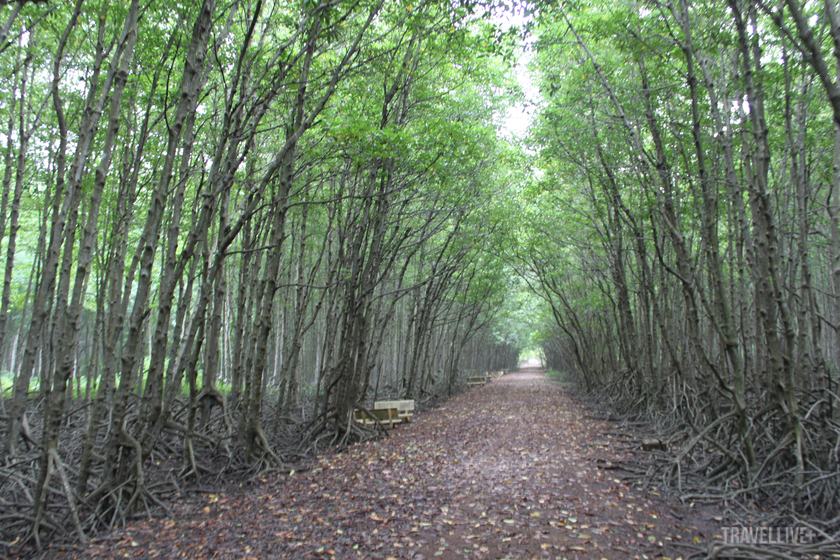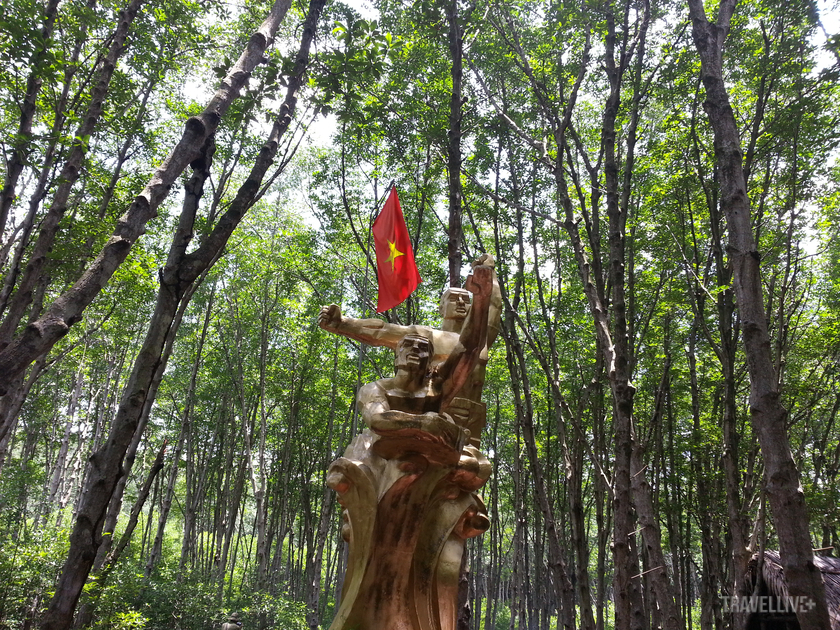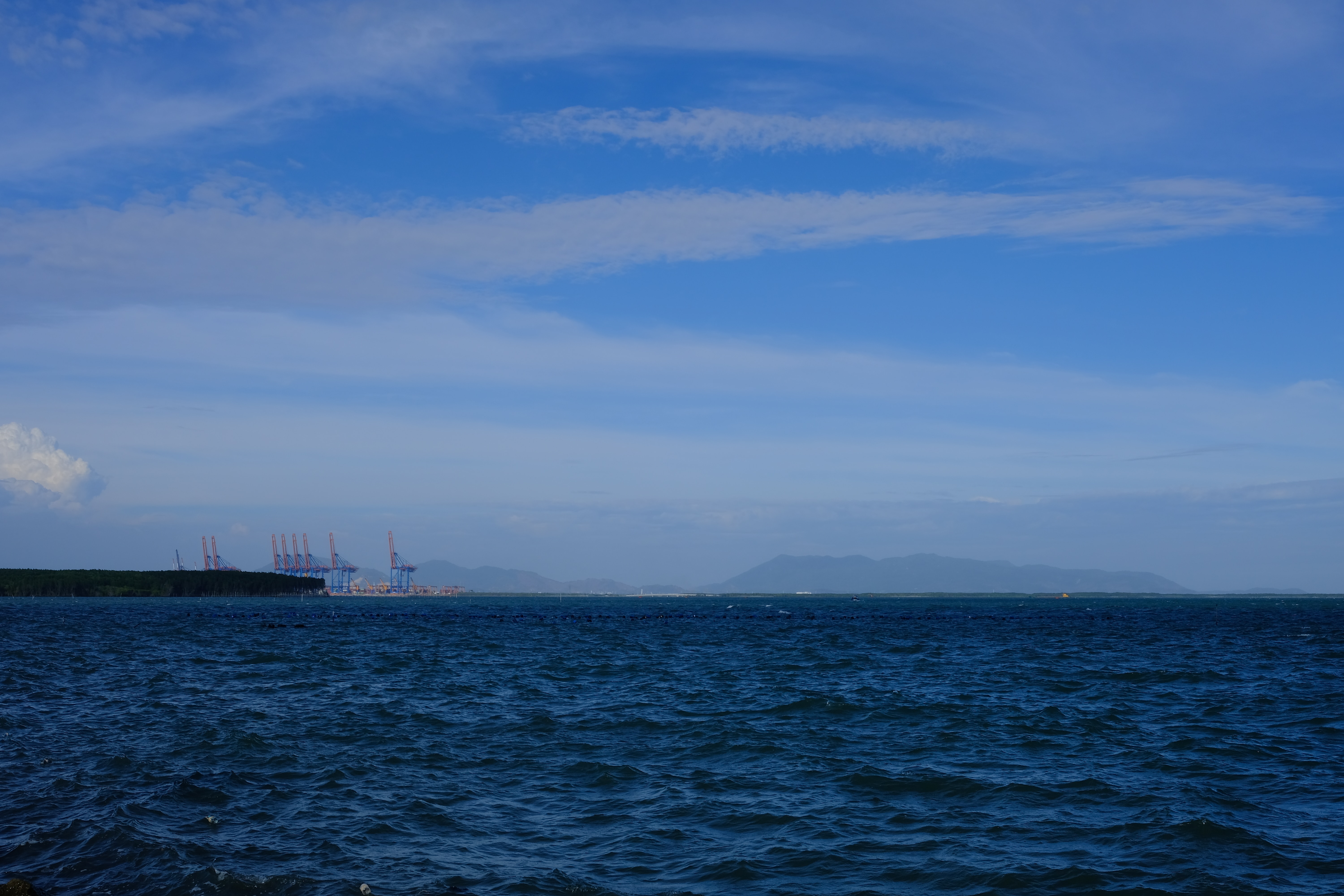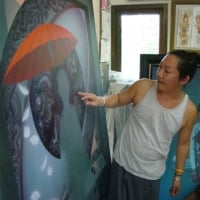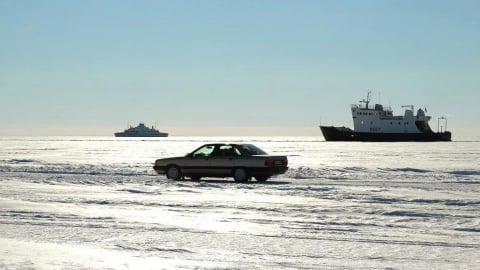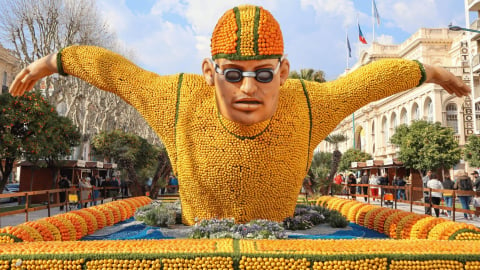Can Gio is like an island separated from the surrounding area, surrounded by rivers and sea. There is both fresh water: Long Tau River flows through the middle of the district, brackish water: where water coconuts and mangroves cover everywhere and Can Gio beach where rivers flow out to the sea.
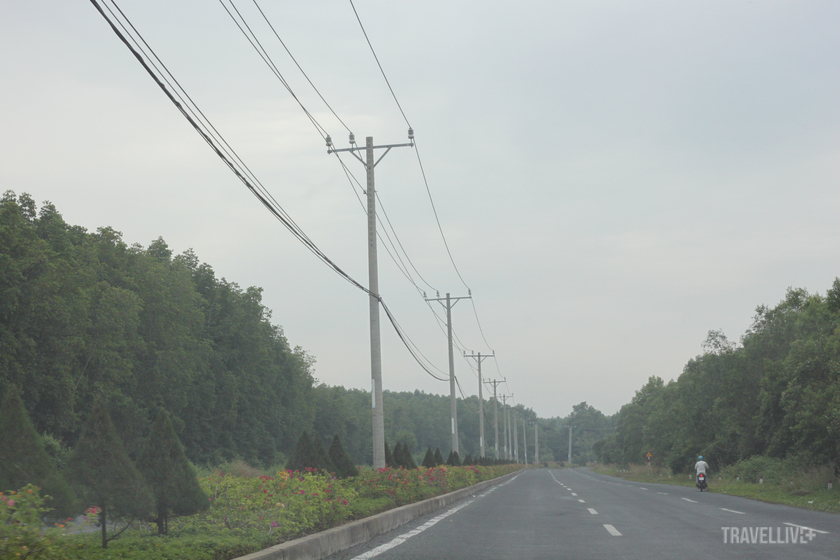
Road to Can Gio.
Passing Nha Be, heading towards Binh Khanh ferry, the bustling urban noise of Saigon just receded and seemed so far away. The wide roads stretched out endlessly, occasionally there were shrimp ponds and bird houses with chirping birds, interspersed on both sides of the road, a green color of fruit trees. The car stopped so we could drink a glass of coconut water, while my friend from the old quarter of Hanoi sat on a chair by the roadside watching a herd of wild pigs, a mother and three black pigs, leisurely foraging for food, then turned back and said slowly: "It's so fresh and comfortable, can we sit here for a while and then go home so we don't get carsick?"
Can Gio has the most beautiful black sand beach in Vietnam. The reason for this black sand phenomenon is the mangrove forest here. Although swimming is not possible due to the black sand and big waves, Can Gio beach brings sunshine and wind along with all kinds of fresh seafood for Saigon people and tourists, displayed fresh and attracting people walking in the middle of Hang Duong seafood market.

Boats on Long Tau River, Can Gio.
A unique feature of ancient Vietnamese fishing villages is the Whale Temple. According to legend, the Whale (Nha Tang) is considered by fishermen as a God, saving them many times when they were in trouble during their voyages at sea, encountering big storms and rough waves. So, when the Whale got into trouble during their voyages at sea, the fishermen immediately brought it to the mainland and built a temple to worship the "World's Largest Mammal", burning incense all year round. The Can Gio Sea God Temple also holds the Whale Festival every year on the full moon of August.
Another unique thing about Can Gio is that it is rare (or unique) in Vietnam for wild animals to coexist peacefully and carefreely with humans like in Can Gio. Stepping into Monkey Island, you can see groups of monkeys, big and small, jumping around, playing, coaxing, and chatting with each other throughout the mangrove forest, on the canal banks, along the concrete roads... The tourist area's tour guides also remind visitors to be careful with their bags, phones, or wallets, in case the mischievous monkeys tease and pull them out.
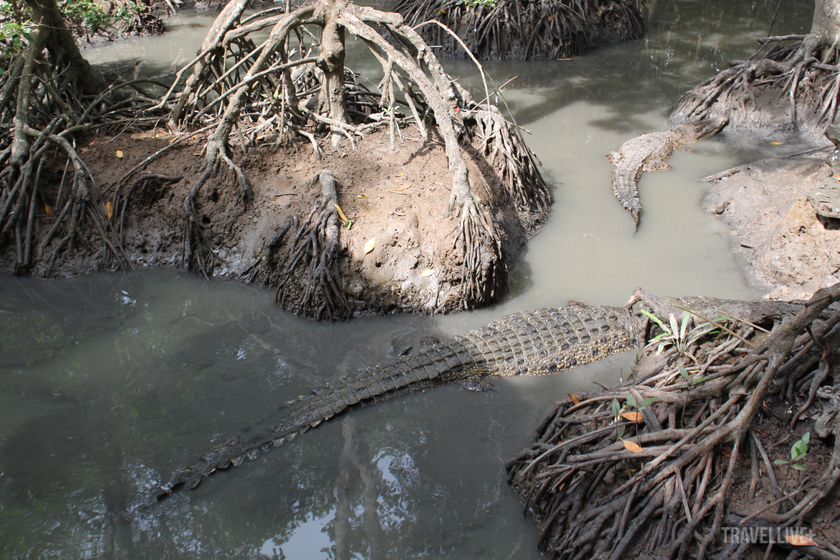
Crocodiles in Sac forest.

The nature and animals here are extremely diverse.
We walked into Sac forest, the second largest mangrove forest in the country, which grew from the efforts of the City Youth Volunteers after Liberation Day (the old forest was destroyed by chemicals and bombs during the war against the US). The further we walked, the more we looked at the mangrove trees with slender trunks and branches, and their strong roots reaching deep into the muddy ground, and we could feel the strong vitality of the nature and people of this land.
The camps, pools, water jars, trenches... tell of a tragic and heroic time, the uprising of Can Gio base - one of the two largest resistance bases in Saigon (next to Cu Chi) with the famous Sac forest special forces "appearing like ghosts" and making glorious feats that shook the world such as the burning of 150 million liters of gasoline in Nha Be gas depot, both worrying about fighting and worrying about survival against the jungle rain, mosquitoes, crocodiles swimming right under the feet... Groups of both Western and Vietnamese visitors with admiring eyes listened to the old stories, including veterans, every time they entered the camp with the model of a meeting, battlefield or training session, the uncles and brothers stood at attention, raised their hands in military salute, and loudly said: "Greetings, comrades!"
